Abstract
A national survey was conducted of 3150 notified cases of whooping cough in order to determine age-specific pertussis vaccine efficacy by the 'screening' method. The cases were collected over two periods, one just prior to the start and one at the first peak of the whooping cough epidemic of 1989-90. Vaccination status was determined by a postal questionnaire to the reporting doctor and clinical data were also collected to provide efficacy estimates according to standardized case definitions. Overall, observed vaccine efficacy was high but differed between epidemic (87%) and non-epidemic (93%) periods (P = 0.03). Efficacy estimates were generally higher for typical or severe cases than for children with an atypical illness. Vaccine efficacy declined with age (P < 0.01) but estimates remained high up to the age of 8 years. This study will provide baseline data for comparison with efficacy observed from similar studies of children immunized at an accelerated schedule and from phase III studies of acellular pertussis vaccines performed elsewhere.
Full text
PDF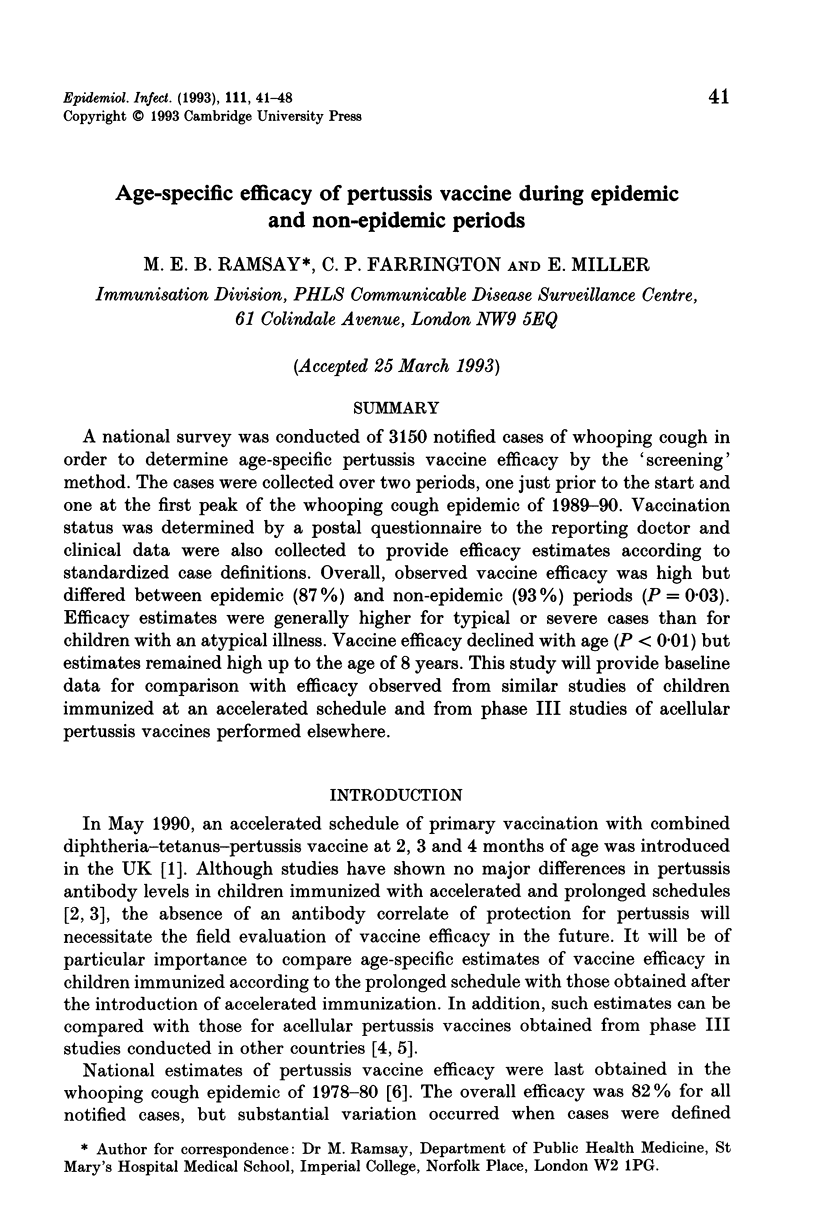
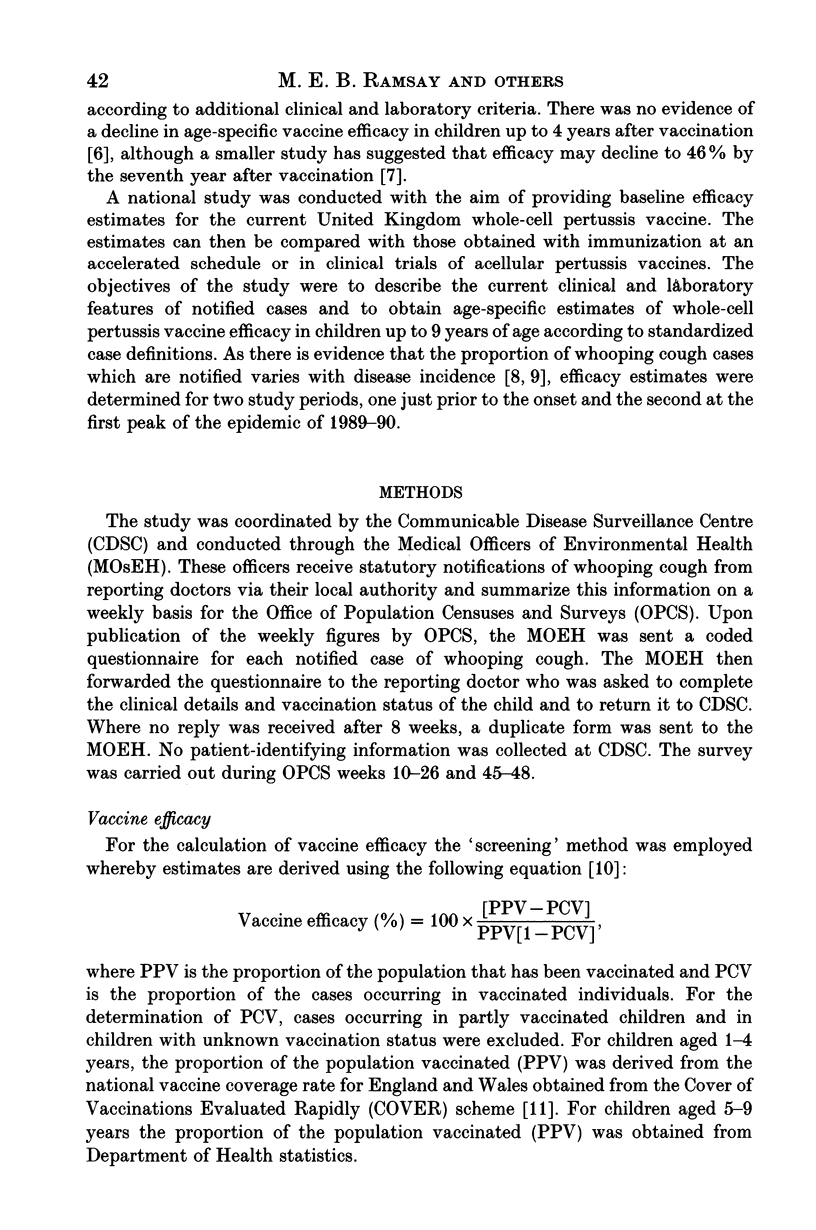
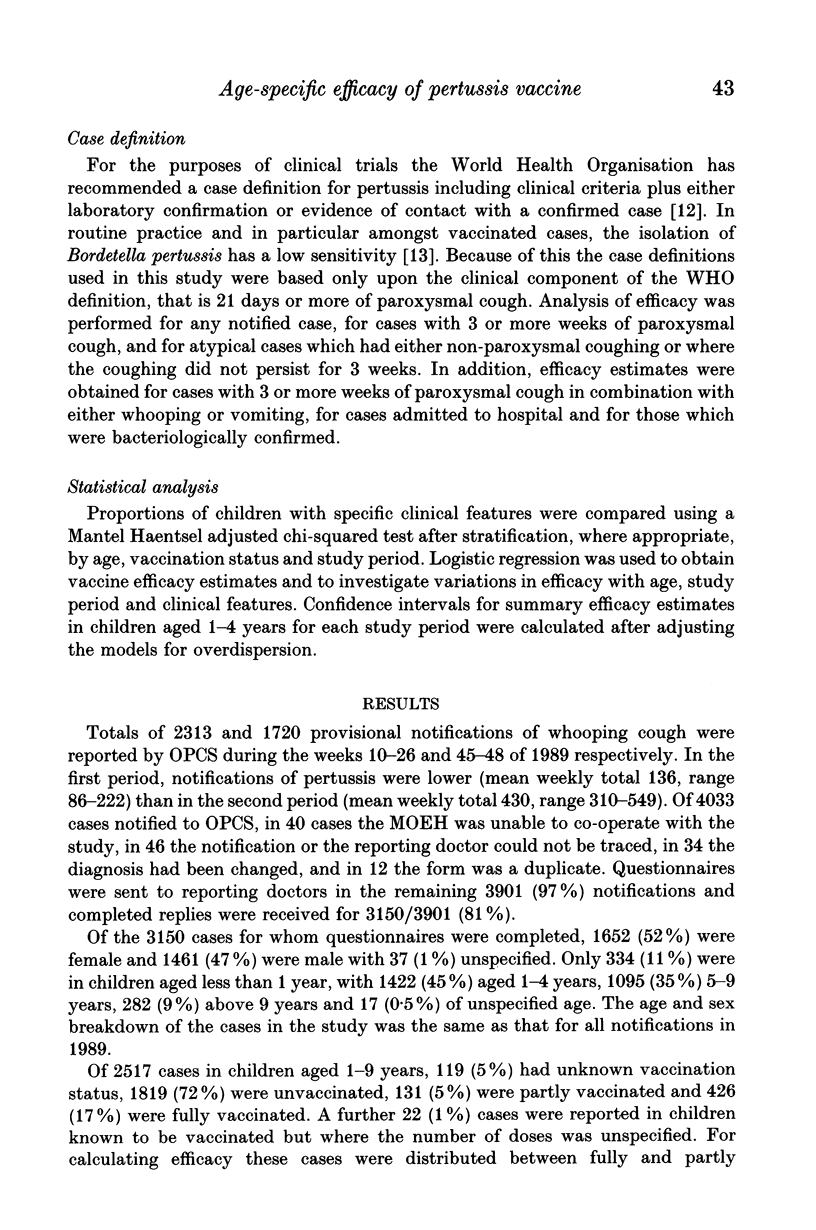
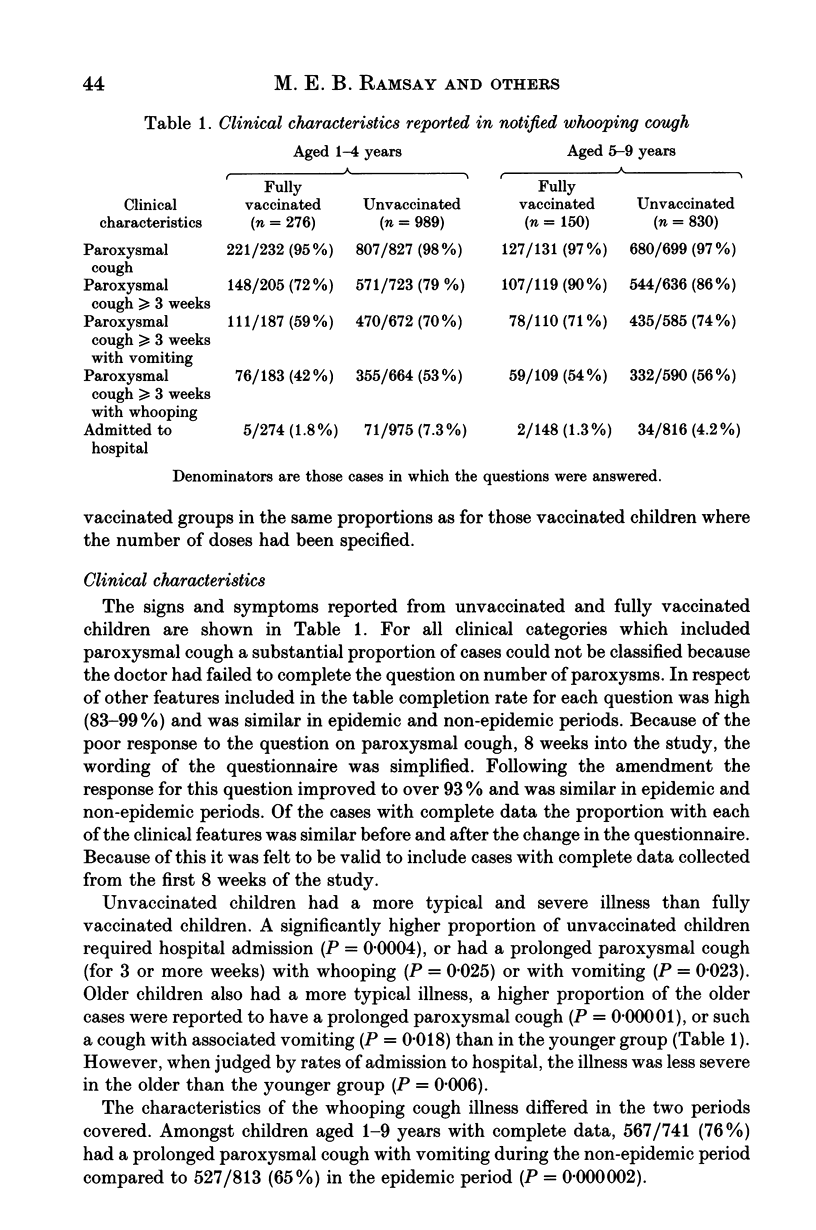
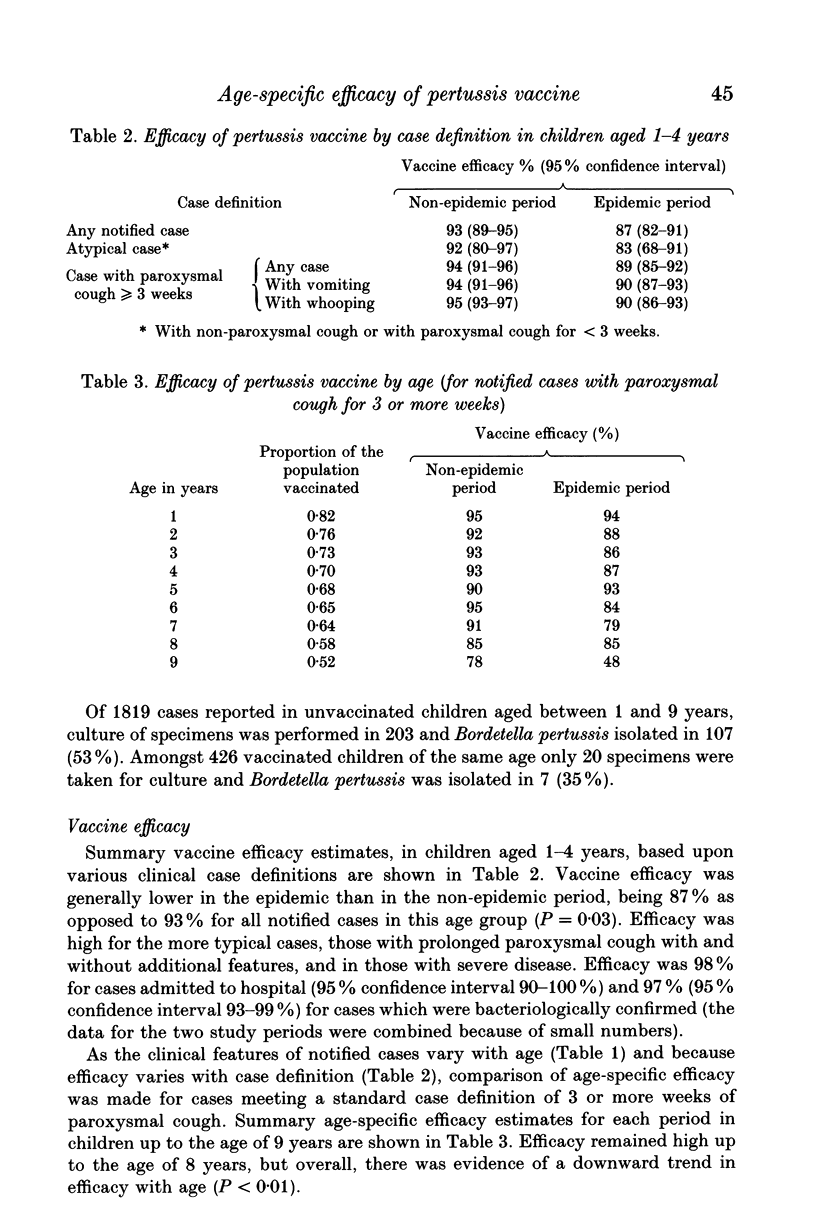
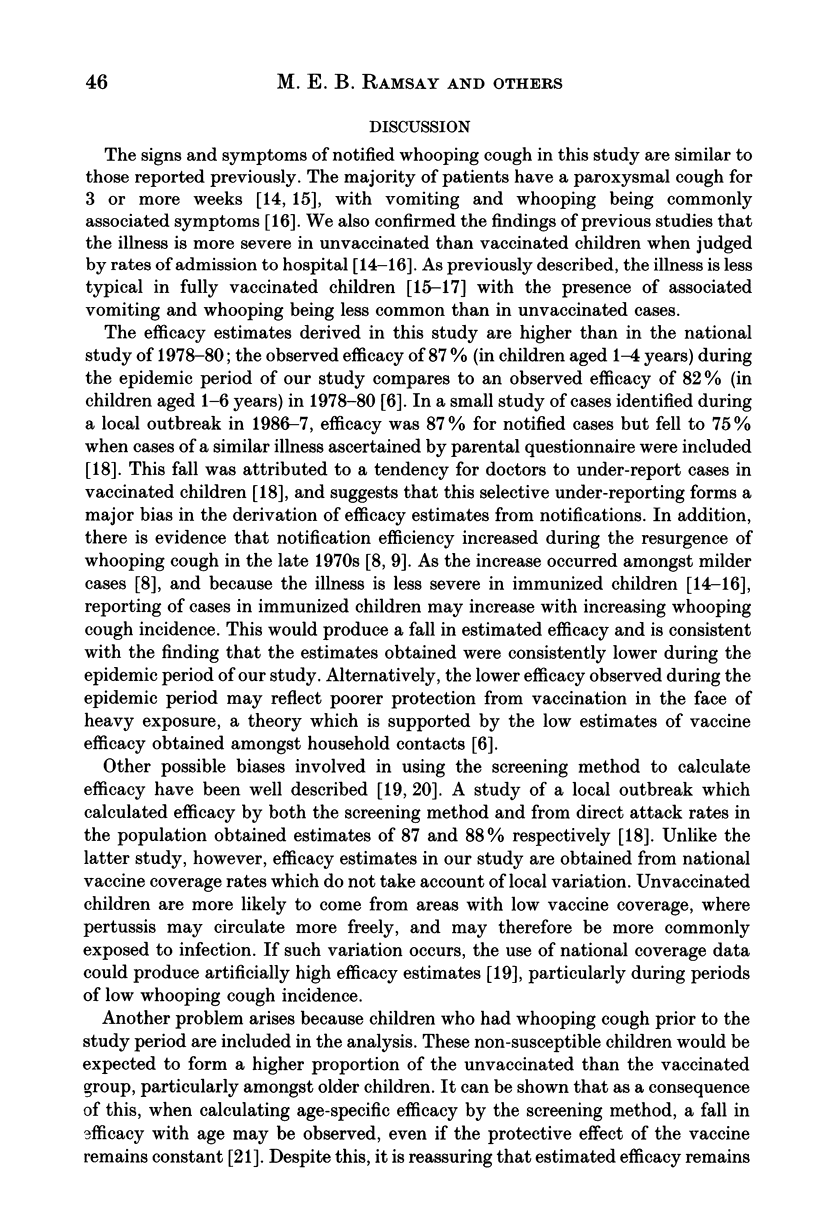
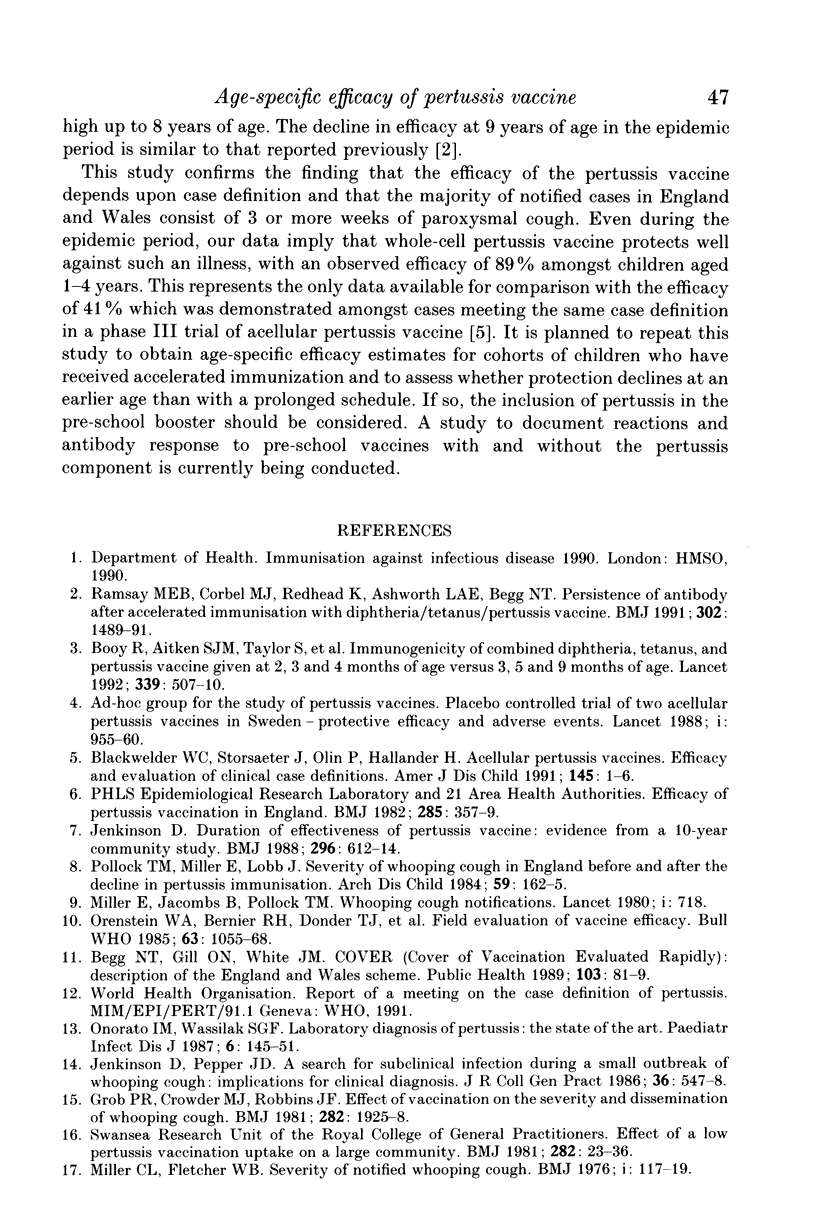
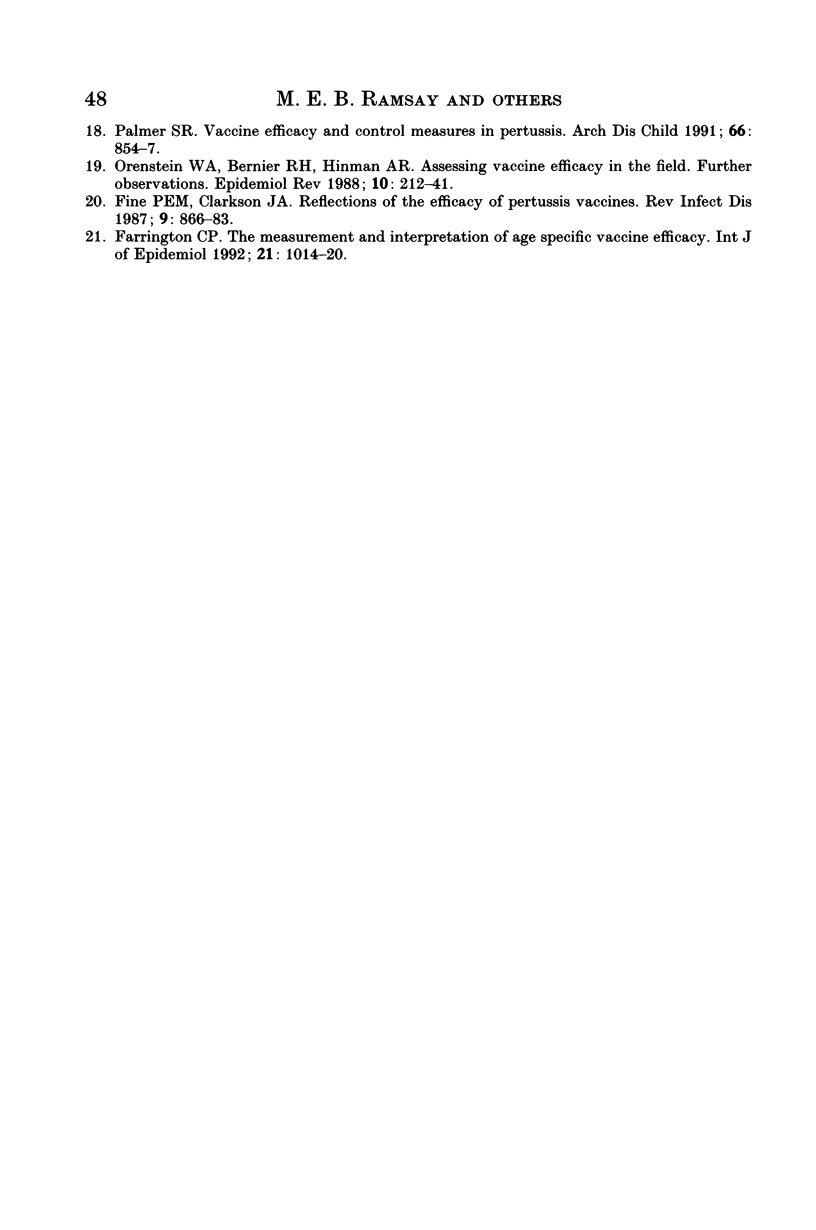
Selected References
These references are in PubMed. This may not be the complete list of references from this article.
- Begg N. T., Gill O. N., White J. M. COVER (cover of vaccination evaluated rapidly): description of the England and Wales scheme. Public Health. 1989 Mar;103(2):81–89. doi: 10.1016/s0033-3506(89)80021-6. [DOI] [PubMed] [Google Scholar]
- Booy R., Aitken S. J., Taylor S., Tudor-Williams G., Macfarlane J. A., Moxon E. R., Ashworth L. A., Mayon-White R. T., Griffiths H., Chapel H. M. Immunogenicity of combined diphtheria, tetanus, and pertussis vaccine given at 2, 3, and 4 months versus 3, 5, and 9 months of age. Lancet. 1992 Feb 29;339(8792):507–510. doi: 10.1016/0140-6736(92)90336-2. [DOI] [PubMed] [Google Scholar]
- Farrington C. P. The measurement and interpretation of age-specific vaccine efficacy. Int J Epidemiol. 1992 Oct;21(5):1014–1020. doi: 10.1093/ije/21.5.1014. [DOI] [PubMed] [Google Scholar]
- Fine P. E., Clarkson J. A. Reflections on the efficacy of pertussis vaccines. Rev Infect Dis. 1987 Sep-Oct;9(5):866–883. doi: 10.1093/clinids/9.5.866. [DOI] [PubMed] [Google Scholar]
- Grob P. R., Crowder M. J., Robbins J. F. Effect of vaccination on severity and dissemination of whooping cough. Br Med J (Clin Res Ed) 1981 Jun 13;282(6280):1925–1928. doi: 10.1136/bmj.282.6280.1925. [DOI] [PMC free article] [PubMed] [Google Scholar]
- Jenkinson D. Duration of effectiveness of pertussis vaccine: evidence from a 10 year community study. Br Med J (Clin Res Ed) 1988 Feb 27;296(6622):612–614. doi: 10.1136/bmj.296.6622.612. [DOI] [PMC free article] [PubMed] [Google Scholar]
- Jenkinson D., Pepper J. D. A search for subclinical infection during a small outbreak of whooping cough: implications for clinical diagnosis. J R Coll Gen Pract. 1986 Dec;36(293):547–548. [PMC free article] [PubMed] [Google Scholar]
- Miller C. L., Fletcher W. B. Severity of notified whooping cough. Br Med J. 1976 Jan 17;1(6002):117–119. doi: 10.1136/bmj.1.6002.117. [DOI] [PMC free article] [PubMed] [Google Scholar]
- Miller E., Jacombs B., Pollock T. M. Whooping-cough notifications. Lancet. 1980 Mar 29;1(8170):718–718. [PubMed] [Google Scholar]
- Onorato I. M., Wassilak S. G. Laboratory diagnosis of pertussis: the state of the art. Pediatr Infect Dis J. 1987 Feb;6(2):145–151. doi: 10.1097/00006454-198702000-00002. [DOI] [PubMed] [Google Scholar]
- Orenstein W. A., Bernier R. H., Dondero T. J., Hinman A. R., Marks J. S., Bart K. J., Sirotkin B. Field evaluation of vaccine efficacy. Bull World Health Organ. 1985;63(6):1055–1068. [PMC free article] [PubMed] [Google Scholar]
- Orenstein W. A., Bernier R. H., Hinman A. R. Assessing vaccine efficacy in the field. Further observations. Epidemiol Rev. 1988;10:212–241. doi: 10.1093/oxfordjournals.epirev.a036023. [DOI] [PubMed] [Google Scholar]
- Palmer S. R. Vaccine efficacy and control measures in pertussis. Arch Dis Child. 1991 Jul;66(7):854–857. doi: 10.1136/adc.66.7.854. [DOI] [PMC free article] [PubMed] [Google Scholar]
- Pollock T. M., Miller E., Lobb J. Severity of whooping cough in England before and after the decline in pertussis immunisation. Arch Dis Child. 1984 Feb;59(2):162–165. doi: 10.1136/adc.59.2.162. [DOI] [PMC free article] [PubMed] [Google Scholar]
- Ramsay M. E., Corbel M. J., Redhead K., Ashworth L. A., Begg N. T. Persistence of antibody after accelerated immunisation with diphtheria/tetanus/pertussis vaccine. BMJ. 1991 Jun 22;302(6791):1489–1491. doi: 10.1136/bmj.302.6791.1489. [DOI] [PMC free article] [PubMed] [Google Scholar]


